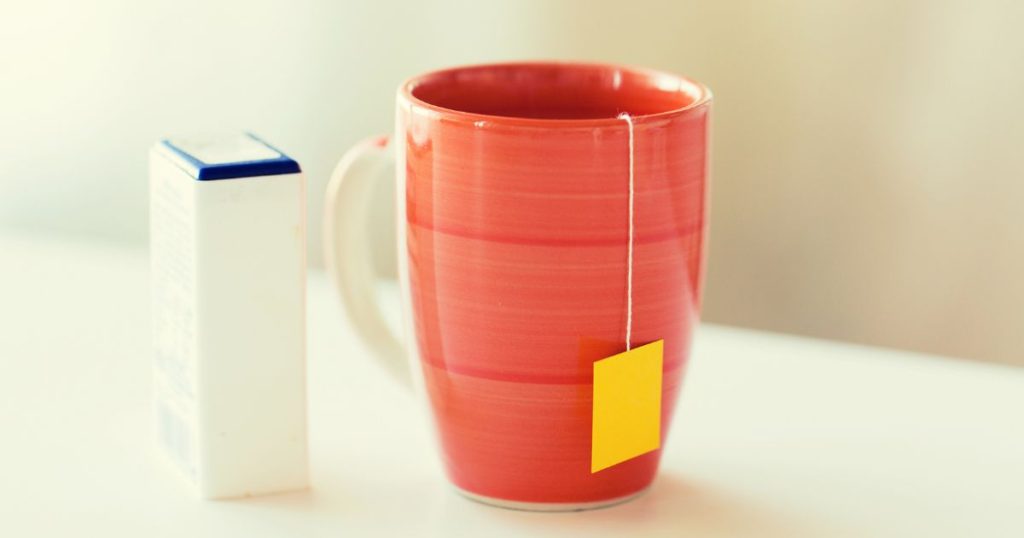 Let’s continue to unravel the confusion around the types of sweeteners on the market today, starting with the carbohydrate sugars. There is one exception in the list, stevia has no carbohydrates. These are the more common ones we see on packaging and they are listed in alphabetical order. (A quick pointer on terms – monosaccharides are the simple sugars like glucose and fructose. Disaccharides (double sugars) are two monosaccharides joined together i.e. sucrose which is glucose and fructose.)
Let’s continue to unravel the confusion around the types of sweeteners on the market today, starting with the carbohydrate sugars. There is one exception in the list, stevia has no carbohydrates. These are the more common ones we see on packaging and they are listed in alphabetical order. (A quick pointer on terms – monosaccharides are the simple sugars like glucose and fructose. Disaccharides (double sugars) are two monosaccharides joined together i.e. sucrose which is glucose and fructose.)
Amazake: A natural disaccharide sweetener made from brown rice with similar characteristics to honey and rice syrup.
Agave Nectar: A natural liquid sweetener that is less viscous than honey, agave nectar comes in three grades: Light, medium and amber. Light agave is sweet but neutral. The flavor of agave becomes more intense and earthy with the darker grades. Agave is extracted from the agave plant, and make sure the brand you choose has a good extraction method.
Brown Sugar: This is ordinary table sugar that is coated with small amounts of molasses.
Barley Malt: Dark, sticky and boldly flavored, barley malt sugar is neither as assertive as blackstrap molasses nor as sweet as honey. Primarily maltose, it is a complex sugar that enters the bloodstream slowly. This sweetener offers trace amounts of eight vitamins and several minerals.
Birch syrup: is a sweetener made from the sap of birch trees, and used in much the same way as maple syrup.
Chicolin: This is a soluble fiber called Inulin, derived from the tubers of the chicory or dahlia flower plant. This soluble fiber is found in numerous roots in various amounts such as dahlia flower tubers, chicory roots, dandelion roots, burdock roots, Jerusalem artichokes, asparagus, and onions.
Corn Syrup: It contains anywhere from 43-90% fructose, the rest is glucose (the sugar our body burns as fuel) and a small amount of other sugars such as maltose.
Date Sugar: Not actually a sugar in the conventional sense, date sugar is ground from dehydrated dates. Dates are high in fiber, and rich in a wide variety of vitamins and minerals, including iron. It does not dissolve when added to liquids.
Demerara, Turbinado and Raw Sugar: These are various grades of granulated dark brown sugar obtained from the evaporation of sugar cane juice leaving the molasses.
Dextrose: This is the “right handed” variation of glucose. It is usually made from corn or grape sugar. It is a monosaccharide.
D-Mannose: A simple sugar derived from cranberries, blueberries, peaches, oranges, apples and pineapples, which does not interfere with blood sugar regulation.
Fruit Juice: A common sweetener used for many health-store-packaged cereals, cookies, etc. It contains some vitamins and minerals.
Fruit Juice Concentrates: Made from the juice of fruit that has been reduced about one quarter by slow cooking. Note that some commercial fruit juice concentrates have been stripped of flavor and nutritional value.
Fructooligosaccharides (FOS): These are sucrose molecules linked in sequence with fructose. They are found naturally in many vegetables, grains and fruits. FOS promotes the growth of the beneficial gut bacteria (lactobacillus acidophilus and Bifidus) and prevents fungal (Candida) overgrowth. Good natural sources of FOS include Jerusalem artichoke flour, asparagus, onion, leek, garlic, dahlia inulin, chicory and burdock.
Fructose: This is a monosaccharide found naturally in most fruits and some vegetables. Apples, raisins, kiwis, grapes, green beans, cabbages, cucumbers, eggplants, and tomatoes are some of the best sources of fructose. It can also be produced through the conversion of corn syrup starches. It is generally believed that fructose doesn’t disturb the blood sugar level as much as sucrose.
Glucose: Glucose is a monosaccharide found in fruit, vegetables and honey. It is also commercially produced from cornstarch that has been treated with heat, acids and enzymes. All natural sugars are converted by the body to glucose, which is rapidly absorbed into the blood stream and used for fuel.
Granulated Cane Juice : It is whole cane sugar with the water removed, which makes it slightly healthier than refined sugar. It contains small amounts of vitamins and minerals, which offset the deleterious effects of sugar.
Granular Fruit Sweeteners: White grape juice and grain sweeteners that have been dehydrated and granulated.
Honey: A whole food made by bees from flower nectar. Raw, unpasteurized honey is a good sugar alternative because it is considerable sweeter and people tend to use less of it. It contains small amounts of vitamins and trace minerals. Manuka honey from New Zealand has been proven therapeutic for peptic ulcer disease.
Invert Sugar: This is simply sucrose that has been subjected to “hydrolysis” which breaks the disaccharide sucrose into its constituent sugars, glucose and fructose.
Lactose: This is sugar found in milk.
Licorice Root: It can be used as a natural sweetener in small amounts without serious adverse reactions.
Maltose: Sprouted grains and cooked rice, heated and fermented until starch turns to sugar.
Maple Syrup: Boiled-down sap of maple trees. It takes 40 gallons of sap to make one gallon of syrup. Maple syrup has twice as much calcium as milk. Not all maple syrup is pure; some contains traces of formaldehyde, a carcinogen, so it is best to buy organic maple syrup. This is a natural occurring sweetener, which is at best, 65% sucrose. It is basically a sugar equivalent with a similar biochemical effect as raw, unpasteurized honey. Maple Sugar: Maple sugar is what is left when all of the liquid had been cooked out of maple syrup. Maple sugar has a wonderful, maple and earthy flavor that lends depth to baking and cooking.
Mannitol, Sorbitol, Xylitol: These compounds derived from fruits, vegetables and birchwood chips, are used in “sugar free “candies, mints and gums. They are absorbed more slowly into the blood stream and unlike sucrose, don’t cause a rapid increase in blood sugar levels. Xylitol helps prevent dental cavities.
Molasses: Unsulphured molasses is made from the juice of sun-ripened cane; sulfured molasses is a byproduct of refined sugar; blackstrap molasses is the residue of the cane syrup after the sugar crystals have been separated. It is rich in nutrients like B vitamins, vitamin E, iron, calcium, magnesium, potassium, chromium, manganese, and zinc.
Natural and Organic Sugar: These sweeteners are minimally processed sugar cane. The syrup is dehydrated, and then milled into a powder.
Palm Sugar: Was originally made from the sugary sap of the date palm or sugar date palm. Now it is also made from the sap of the sago and coconut palms. It is considered low glycemic and high in nutrient value.
Rice Syrup: A traditional Asian sweetener, brown rice syrup is made from rice starch converted into maltose, a complex sugar. Rice syrup is the mildest-flavored of the liquid sweeteners and contains trace amounts of B vitamins and minerals. It is full of the nutrients of unrefined brown rice.
Sorghum Syrup: This is nutritious sweet syrup made from a tall annual plant of the grass family, much like Indian corn. Sorghum is sometimes called Guinea Corn. Sorghum cane juice is boiled to a syrup.
Stevia: (Contains no carbohyrdrates) This plant is a perennial shrub, the extracts of which have been used for centuries as a safe natural sweetener by people in Paraguay and Brazil. Stevia is 200 to 300 times sweeter than sugar. It is virtually calorie free. It does not trigger a rise in blood sugar. It has anti-fungal properties, is a plaque retardant, and is beneficial in fat absorption, blood pressure regulation and prevention of cavities. It does increase energy. It improves digestion by stimulating the pancreas. As sweeteners go, it is quite expensive, though a little goes a very long way.
Sucrose: It is a disaccharide mixture composed of one molecule of glucose and one of fructose. It is table sugar derived from sugar beets or sugar cane that are crushed and dissolved in water. The raw syrup is boiled down to concentrate it to a point where some fraction crystallizes.
Sucanat: The trade name for this product stands for SUgar CAne NATural, and is made from evaporated sugar cane juice. It is then milled into granules much the same size as white sugar, but with a tawny hue. It is not bleached as white sugar is, only the water is removed. Sucanat is about 88% sucrose, but it retains more vitamins, minerals, and other trace nutrients found in sugar cane.
Sugar In The Raw: Semi refined sugar, which is 99 percent sucrose.
Yacón Syrup: A sweetening agent extracted from the tuberous roots of the yacón plant. It is a glucose-free sweetener and contains sugars that are complex enough to be medicinal.
Remember all carbohydrates, with the exception of cellulose, are converted to glucose (blood sugar) during the digestive process. Glucose provides the body with energy. My hope is that with this list, you will be more informed to choose the sweeteners that are not going to deplete or harm your body in any way. The more unprocessed the sweetener is and the richer in nutrients it is, the more you can enjoy every mouthful. Your body will thank you.
For more information, please visit my last blog post called The Truth About Refined Sugar.
I’d love to get your feedback. Here on my blog, you’ll get commentluv. That’s great for all bloggers out there. If you leave a comment, you can provide a link back to your own blog. But you don’t have to be a blogger to leave a comment; I’m looking forward to hearing from all of you!
To your good health!
Charlene




Nice post on sugars, which ones are good and which ones should be avoided?
Stay tuned to this week’s blog post where I will go over the sugars that should be avoided.
Be well, Charlene